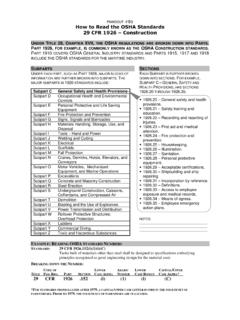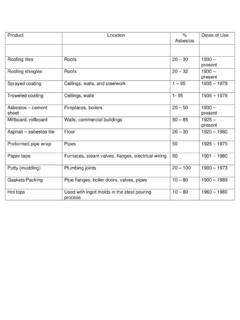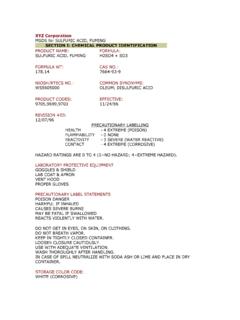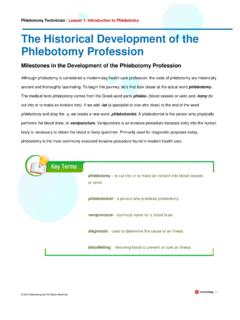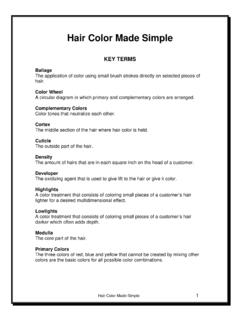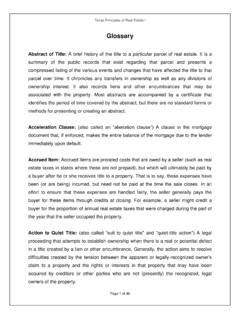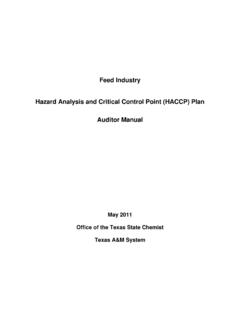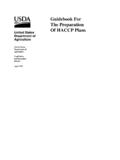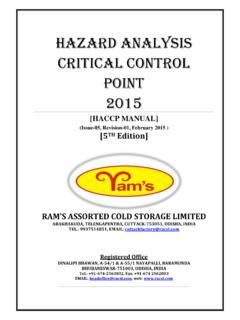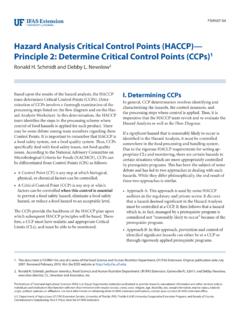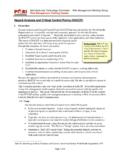Transcription of HAZARD ANALYSIS AND CRITICAL CONTROL ... - …
1 HAZARD ANALYSIS AND CRITICAL CONTROL POINT principles AND APPLICATION guidelines Examples of Verification Activities A. Verification procedures may include: 1. Establishment of appropriate verification schedules 2. Review of the HACCP plan for completeness 3. Confirmation of the accuracy of the flow diagram 4. Review of the HACCP system to determine if the facility is operating according to the HACCP plan 5. Review of CCP monitoring records 6. Review of records for deviations and corrective actions 7. Validation of CRITICAL limits to confirm that they are adequate to CONTROL significant hazards 8. Validation of HACCP plan, including on-site review 9. Review of modifications of the HACCP plan 10. Sampling and testing to verify CCPs B. Verification should be conducted: 1. Routinely, or on an unannounced basis, to assure CCPs are under CONTROL 2.
2 When there are emerging concerns about the safety of the product 3. When foods have been implicated as a vehicle of foodborne disease 4. To confirm that changes have been implemented correctly after a HACCP plan has been modified 5. To assess whether a HACCP plan should be modified due to a change in the process, equipment, ingredients, etc. C. Verification reports may include information on the presence and adequacy of. 1. The HACCP plan and the person(s) responsible for administering and updating the HACCP plan 2. The records associated with CCP monitoring 3. Direct recording of monitoring data of the CCP while in operation 4. Certification that monitoring equipment is properly calibrated and in working order 5. Corrective actions for deviations 6. Sampling and testing methods used to verify that CCPs are under CONTROL .
3 7. Modifications to the HACCP plan 8. Training and knowledge of individuals responsible for monitoring CCPs 9. Validation activities Source: USDA. National Advisory Committee on Microbiological Criteria for Food . HAZARD ANALYSIS and CRITICAL CONTROL Point principles and Application guidelines , Adopted August 14, 1997. < >
